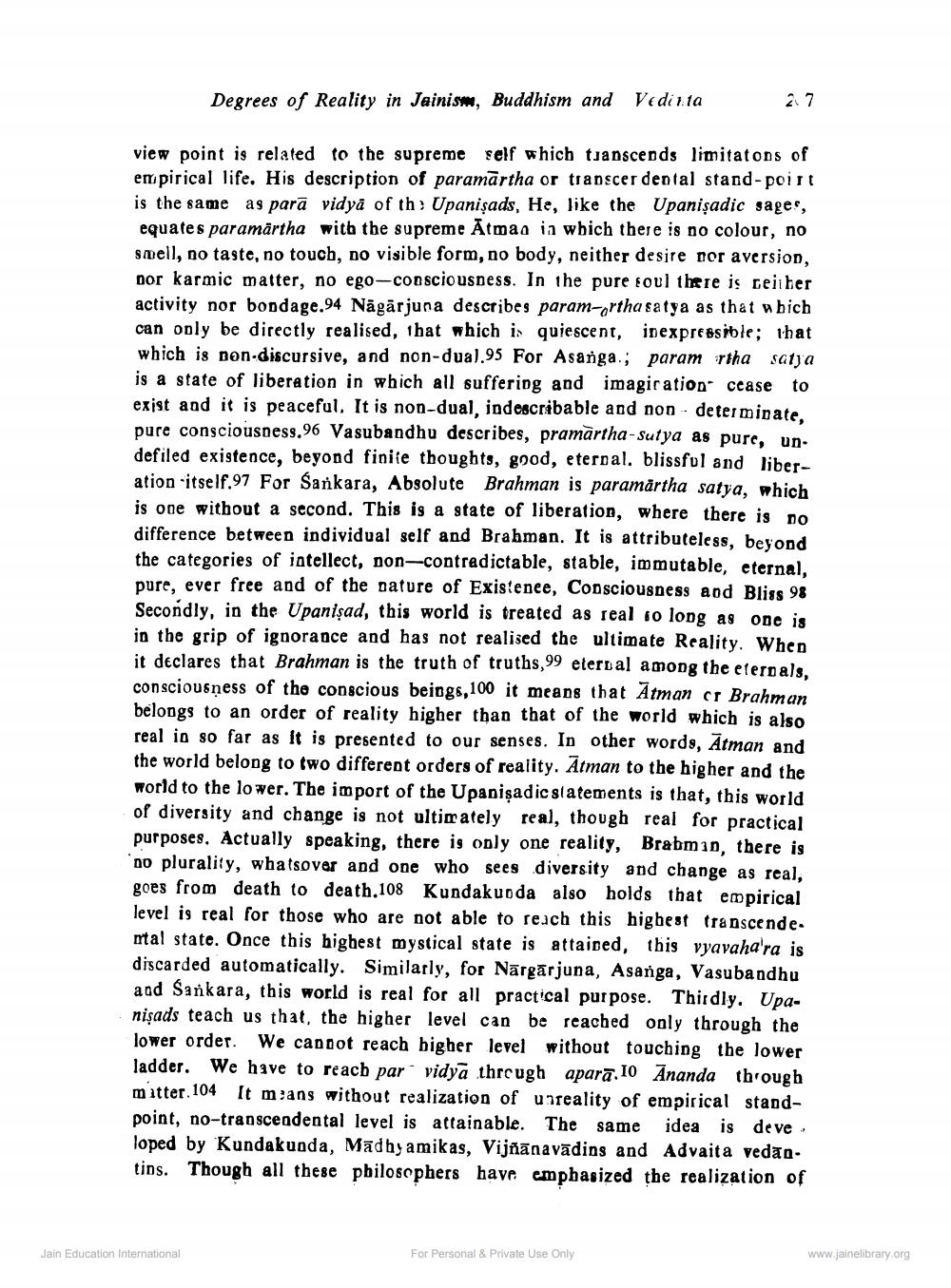________________
Degrees of Reality in Jainism, Buddhism and
Vedinta
27
view point is related to the supreme self which tsanscends limitatons of empirical life. His description of paramārtha or transcer dental stand-point is the same as parā vidyā of th: Upanişads, He, like the Upanișadic sages, equates paramärtha with the supreme Ātman ia which there is no colour, no smell, no taste, no touch, no visible form, no body, neither desire per aversion, por karmic matter, no ego-consciousness. In the pure soul there is ceither activity nor bopdage.94 Nāgārjuna describes param-ortha satya as that which can only be directly realised, that which is quiescent, inexpressible; that which is non-discursive, and non-dual.95 For Asanga.; param rtha satja is a state of liberation in which all suffering and imagiration" cease to exist and it is peaceful. It is non-dual, indescribable and non- determinate. pure consciousness.96 Vasubandhu describes, pramartha-Sutya as pure, un defiled existence, beyond finise thoughts, good, eternal. blissful and liberation itself.97 For Sankara, Absolute Brahman is paramärtha satya, which is one without a second. This is a state of liberation, where there is no difference between individual self and Brahman. It is attributeless, beyond the categories of intellect, non-contradictable, stable, immutable, eternal, pure, ever free and of the nature of Existenee, Consciousness aod Bliss 98 Secondly, in the Upanişad, this world is treated as real so long as one is in the grip of ignorance and has not realised the ultimate Reality. When it declares that Brahman is the truth of truths,99 eternal among the eterpals, consciousness of the conscious beings, 100 it means that Ātman or Brahman belongs to an order of reality higher than that of the world which is also real in so far as it is presented to our senses. In other words, Ātman and the world belong to two different orders of reality. Ātman to the higher and the world to the lower. The import of the Upanişadic statements is that, this world of diversity and change is not ultimately real, though real for practical purposes. Actually speaking, there is only one reality, Brabman, there is no plurality, whatsover and one who sees diversity and change as real, goes from death to death.108 Kundakuoda also holds that empirical level is real for those who are not able to reach this highest transcendental state. Once this highest mystical state is attained, this vyavaha'ra is discarded automatically. Similarly, for Nārgārjuna, Asanga, Vasubandhu and Sankara, this world is real for all practical purpose. Thirdly. Upanişads teach us that, the higher level can be reached only through the lower order. We cannot reach bigher level without touching the lower ladder. We have to reach par vidyā through aparā. 10 Ananda through mitter 104 It means without realization of unreality of empirical standpoint, no-transcendental level is attainable. The same idea is deve loped by Kundakunda, Madhyamikas, Vijñānavādins and Advaita vedao. tins. Though all these philosophers have emphasized the realization of
www.jainelibrary.org
For Personal & Private Use Only
Jain Education International




